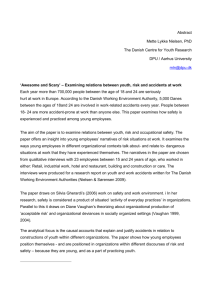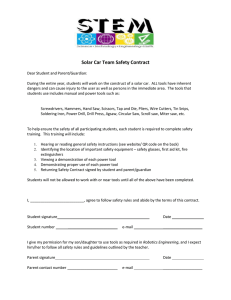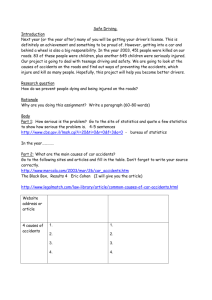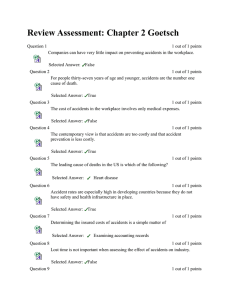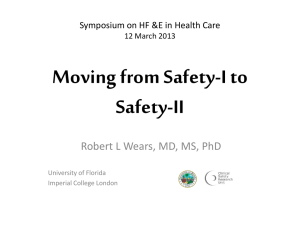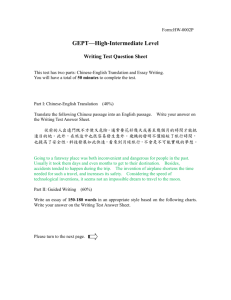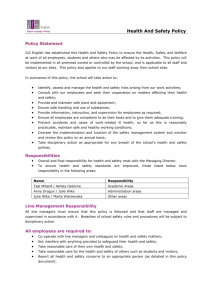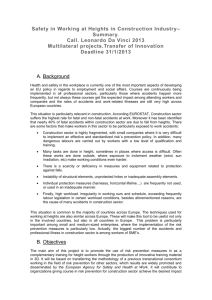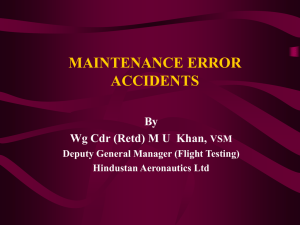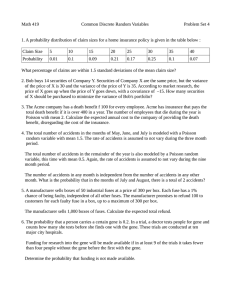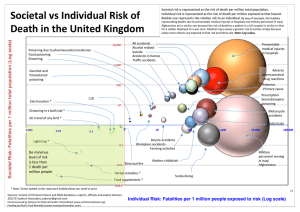aksharma-dfs
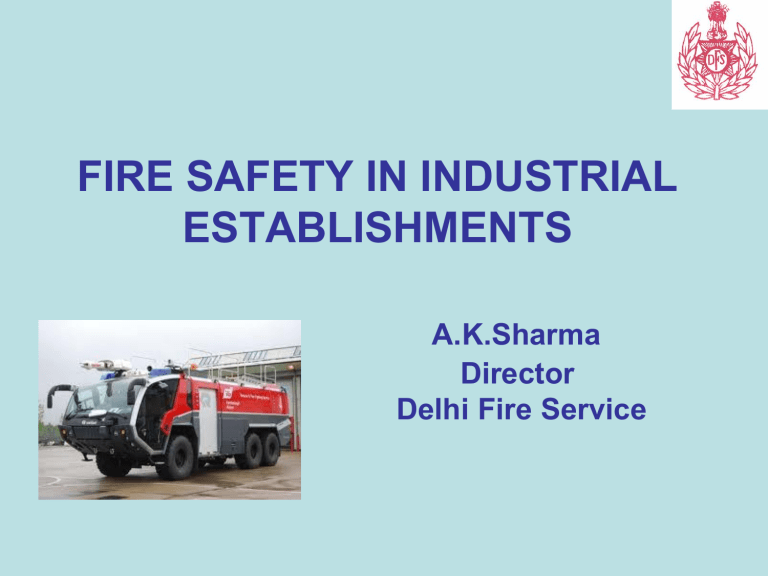
FIRE SAFETY IN INDUSTRIAL
ESTABLISHMENTS
A.K.Sharma
Director
Delhi Fire Service
Industrial Core Sector
• Energy & Power
• Petroleum, Gas and Chemical
• Metals, Minerals and Steel
• Cement
• Coal
• Defence Production
• Telecom & IT
• Automobiles
• Textile
• And many more
• India is the second fastest growing economy in the world. India’s GDP has touched
US$1.25 trillion.
• India is fourteenth in the world in factory output.
• Manufacturing sector together account for 29% of the GDP
• 56 Indian companies were listed in the Forbes Global 2000 ranking for
2010. The 10 leading companies are:
LEADING TEN COMPANIES
WORLD
RANKING
COMPANY
121
150
152
207
SECTOR WORLD
RANKING
COMPANY
Reliance industries
State bank of
India
Banking
ONGC
Oil and gas operations
IOCL
Oil and gas operations
Oil and gas operations
329
463
508
582
ICICI Bank
Tata Steel
Bharti Airtel
SAIL
SECTOR
Banking
Materials
Telecom services
Materials
317 NTPC Utilities 689 Reliance communicati on
Telecom services
Industrial Domain
• Storage (Raw Material - Solid,
Liquid, Gases)
• Process Plant & Machinery
• Utilities ( Power, Steam,
Nitrogen etc.)
• Finished Product
• People (Operation, Maintenance and Supporting Staff)
Industrial Accidents
“ Industrial Accidents are caused by chemical, mechanical, civil, electrical, or other process failures due to accident, negligence or incompetence, in an industrial plant which may spill over to the areas outside the plant causing damage to life and property.
”
Industrial Accidents
These may originate in:
• Manufacturing and formulation installations including during commissioning and process operations; maintenance and disposal.
• Material handling and storage in manufacturing facilities, and isolated storages; warehouses and godowns including tank farms in ports and docks and fuel depots.
• Transportation (road, rail, air, water, and pipelines).
Major Threats
• Fire
• Explosion
• Toxic release
• Poisoning
• Combinations of the above
PROBABLE CAUSES OF ACCIDENTS
• Process deviations i.e pressure, temperature & flow.
• Parameters with regard to the state of the substance i.e., solid, liquid or gas, proximity to other toxic substances.
• Runaway reaction.
• Hardware failure, resulting in largescale spills of toxic substances.
• Boiling Liquid Expanding Vapour
Explosion (BLEVE) on the chemicals during transportation.
• Electrical failure
• Cutting and welding
• Open flame
• Carelessness
• Poor housekeeping
• Smoking
• Sabotage
COMPOUNDING OF EFFECTS OF
ACCIDENTS
• Meteorology of the area, wind speed and direction, rate of precipitation, toxicity/quantity of chemical released, population in the reach of release, probability of formation of lethal mixtures and other industrial activities in vicinity.
Impact of Industrial Accidents
Industrial Accidents
Living Organisms Environment
Immediate, Short-term and Long-term Effects
Humans Livestock Plants
Death, Injury, Disease and Disability
Property
Soil and Water Bodies Atmosphere
Pollution
Major Consequences
Loss of life / injuries
Impact on livestock
Damage to Flora/fauna
Environmental Impact (air, soil,water)
Financial losses to industry .
FILXBOROUGH, 01.06.1974, UK
MEXICO CITY, 19.11.1984,
GASOLENE TANK FIRE-
South
East Asia 2000
Bhopal Gas Tragedy
• Worst industrial disaster in history
• 2,000 people died on immediate aftermath
• Another 13,000 died in next fifteen years
• 10-15 persons dying every month
• 520,000 diagnosed chemicals in blood causing different health complications
• 120,000 people still suffering from
– Cancer
– Tuberculosis
– Partial or complete blindness,
– Post traumatic stress disorders,
– Menstrual irregularities
• Rise in spontaneous abortion and stillbirth
IOC JAIPUR - 2009 slide 20 Uran Plant
IOC JAIPUR - 2009 slide 21 Uran Plant
IOC JAIPUR - 2009
ENVIRONMENT !!!
Oil Rig Explosion
What could have prevented these losses?
RISK CONTROL MEASURES
• Physical Protection
• Procedural Protection
• Educational Protection
Physical Protection
• Strict & Rigorous approach in following the Relevant Standards ,
Codes & Practices
•
Built in Safety Devices and Safety
System
•
Venting through Tall stacks
• Field Monitors for Different Toxic
Gases
•
Burning Waste gases in a Flare
System
•
Provision of Wind Cones
•
Fire Proofing of Steel Structures
•
PPE
•
Passive Protection System
•
Active Protection system
•
Automatic Protection system
PROCEDURAL PROTECTION
•
Fire Emergency Procedure
• Disaster Preparedness Plan
• Mutual Aid Scheme
• No Smoking Policy
•
Investigation of All Accidents
•
Hazard Identification through Safety
Committee, House Keeping Committee, Safety audit Committee
•
Conducting Plant Survey, safety survey
•
Work Permit System
Contd.
•
Safety promotional activities
•
Information notes on unsafe conditions
•
MSDS – Material Safety Data Sheet
•
Annual Medical Check up of
Employees
•
Safe Start up & Shut Down
Procedure
•
Regular and Preventive Maintenance
•
Periodic testing of Fire Fighting
Appliances
EDUCATIONAL PROTECTION
• Periodic Training Program on Safety,
Fire Safety and Hazardous properties of materials
•
Mock Fire Drill
• Safety Manuals
•
Health & Safety News Bulletins, leaflets
•
Safety Motivation schemes
•
Plant Operating Manual
•
Educating the Public Living nearby about the activities in the industry

